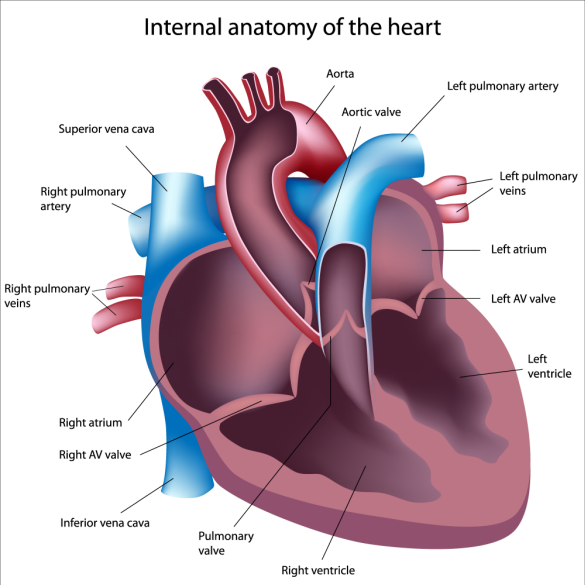By Tabitha Moe and Jeremy Feldman
 A normal heart has 4 chambers: 2 top chambers and 2 bottom chambers. In some patients, only a single bottom chamber (ventricle) develops. These patients with a single ventricle are the most complex form of congenital heart disease.
A normal heart has 4 chambers: 2 top chambers and 2 bottom chambers. In some patients, only a single bottom chamber (ventricle) develops. These patients with a single ventricle are the most complex form of congenital heart disease.
The first surgery to repair this defect occurred in 1968 and was published by Dr. Fontan in 1971. The repair is named after this creative and courageous surgeon. Today there are thousands of adults worldwide who received this life-saving surgical procedure in childhood. Patients who underwent the Fontan surgery do not have a heart chamber to pump blue deoxygenated blood from the body to the lungs. The return of blood to the lungs relies on lung movement within the chest. As the lungs move through cycles filling with air, and emptying a negative pressure creates a vacuum within the chest pulling some blood flow up from the body into the lungs. The lungs also have very low pressure. This allows blood flow to flow downstream towards the lungs. This surgical repair, the Fontan, increases the pressure in the veins of the legs and arms.
There is mounting evidence that suggests when we lower the pressure in the pulmonary arteries there is improved blood flow to the lungs as the resistance to blood flow decreases. There has been great interest in using Pulmonary Arterial Hypertension medications to lower the pressure within the pulmonary arteries to improve lung blood flow. There is a growing experience using PAH medications successfully. The most studied are the PDE5 inhibitors. There is also limited experience with using endothelin receptor antagonists and even prostanoid medications. It is a very exciting time to be able to offer medications to help patients with complex congenital heart disease. Talk to your adult congenital cardiologist or pulmonary hypertension specialist to see if you might benefit.
